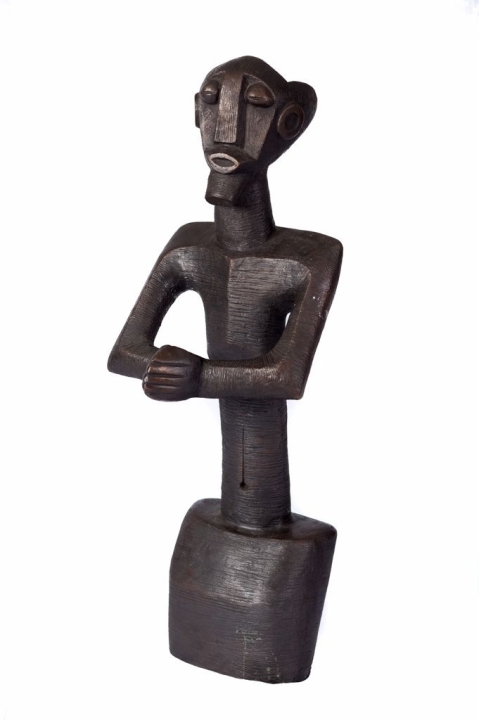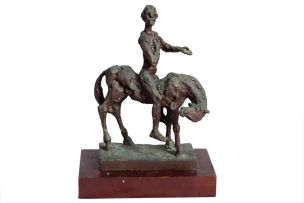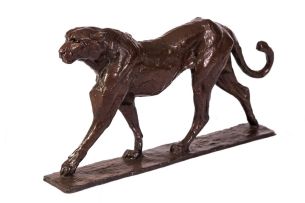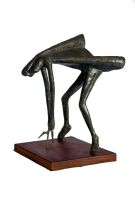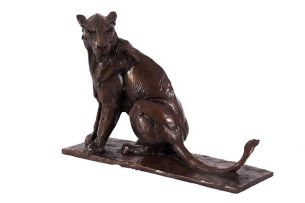South African and International Art
Live Auction, 20 May 2013
Evening Sale
Incl. Buyer's Premium & VAT
About this Item
Notes
The Amadlozi Group ('spirit of our ancestors' in Zulu) was founded in 1963 by the African art collector and gallery director, Egon Guenther.1 This group of artists (comprising Cecil Skotnes, Sydney Kumalo, Cecily Sash, Edoardo Villa, Guiseppe Cattaneo and later Ezrom Legae) was characterised by their respective visions in which they distilled the essence of an African expression in their art.
Guenther broadened their knowledge by exposing them to German Expressionism as well as the sculptural traditions of West and Central Africa. He familiarised them with the work of Willi Baumeister and Rudolf Scharpf, both German artists who had been influenced by African sculpture.2
In Kumalo's sculpture we can see the internal borrowing that took place - the bearing of The Wise Man echoes that of traditional ancestral African figures while the broad abstracted visage of the subject is adopted from African masks. The title nods to the notion of wise men or elders in African society. Ancestors are vested with mystical powers and authority. They retain a functional role in the world of the living, specifically in the life of their living kinsmen; indeed, African kin-groups are often described as communities of both the living and the dead.3
1 Peffer, John. Art and the End of Apartheid. University of Minnesota Press, Chicago, 2009, page 21
2 Ibid, page 42
3 http://lucy.ukc.ac.uk/era/ancestors/kopytoff.html
Literature
Manaka, Matsemela. Echoes of African Art: A Century of Art in South Africa. Skotaville Publishers, Johannesburg, 1987, another cast from the edition illustrated in colour on page 68
